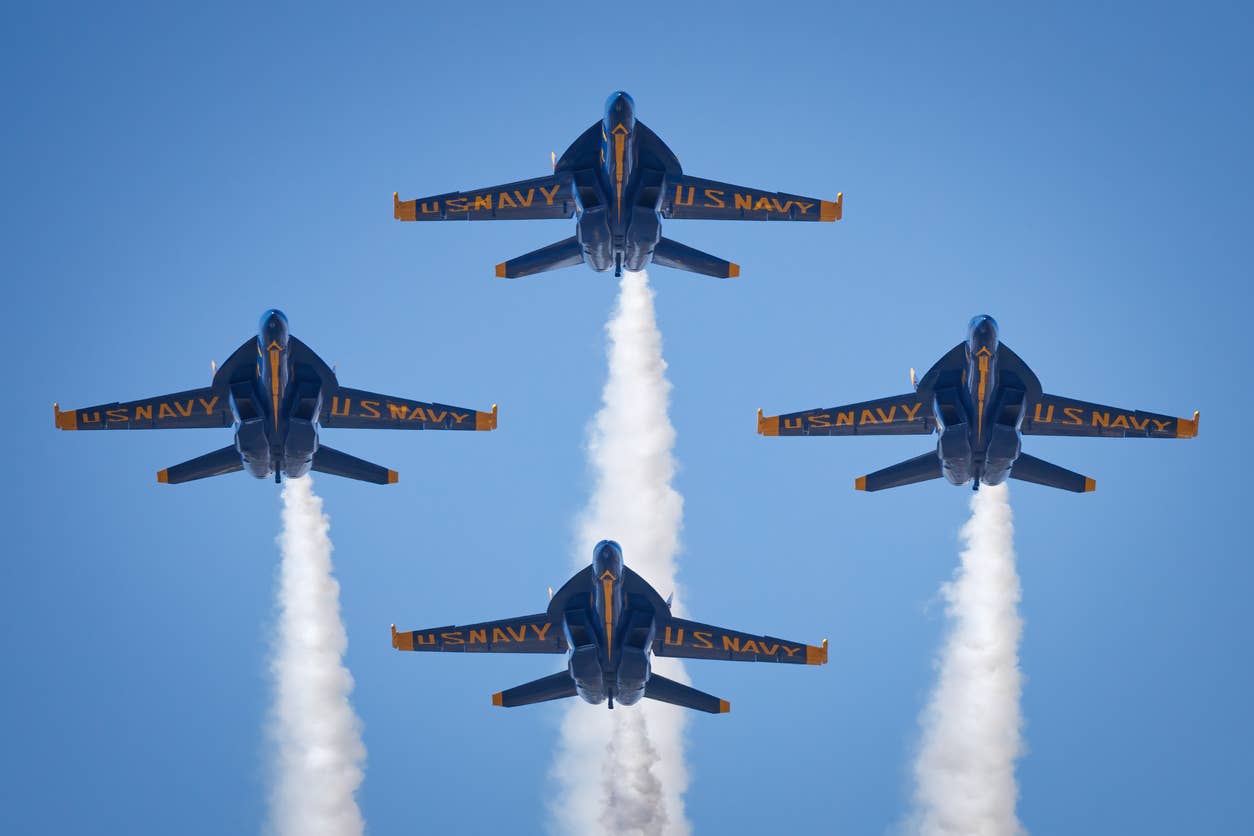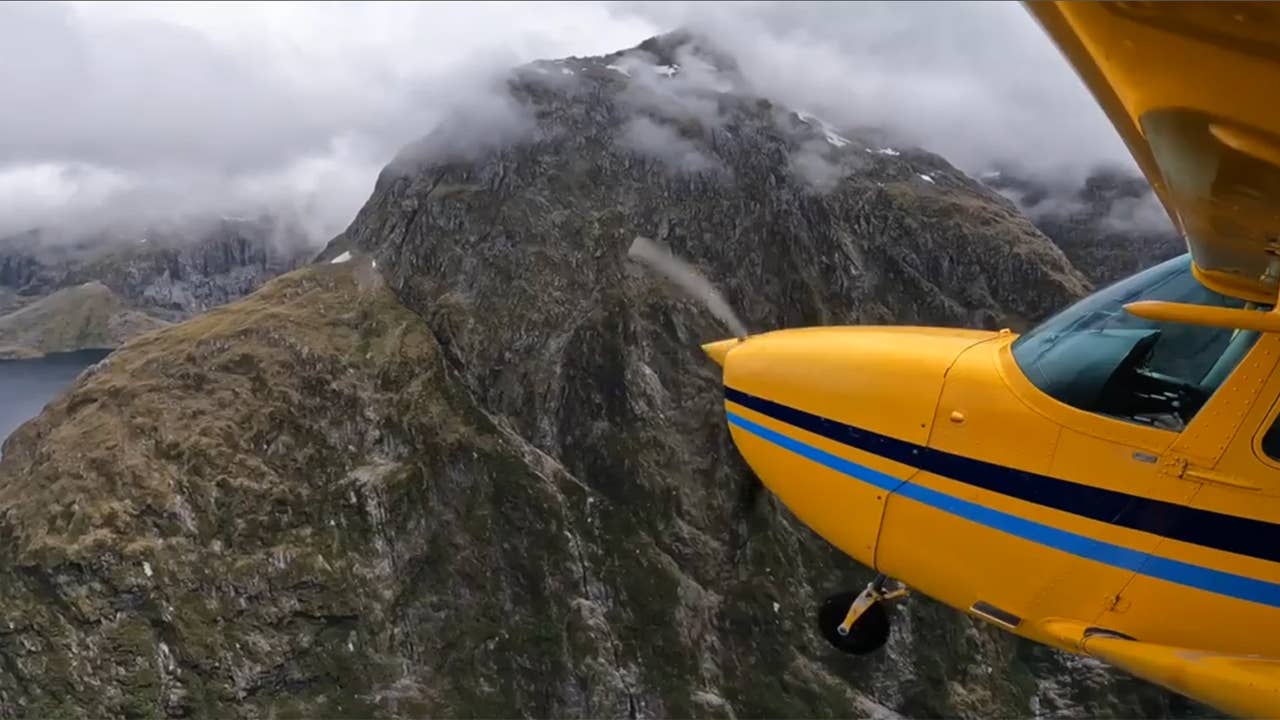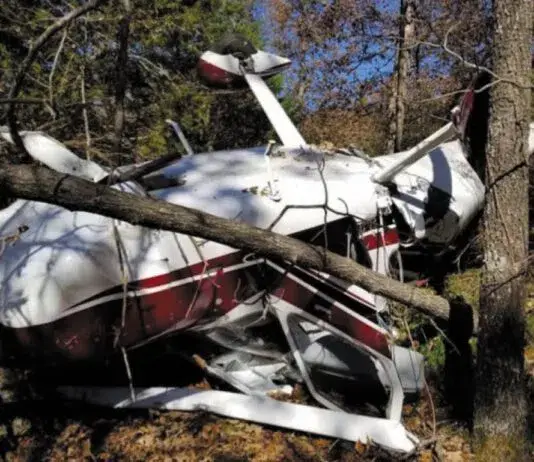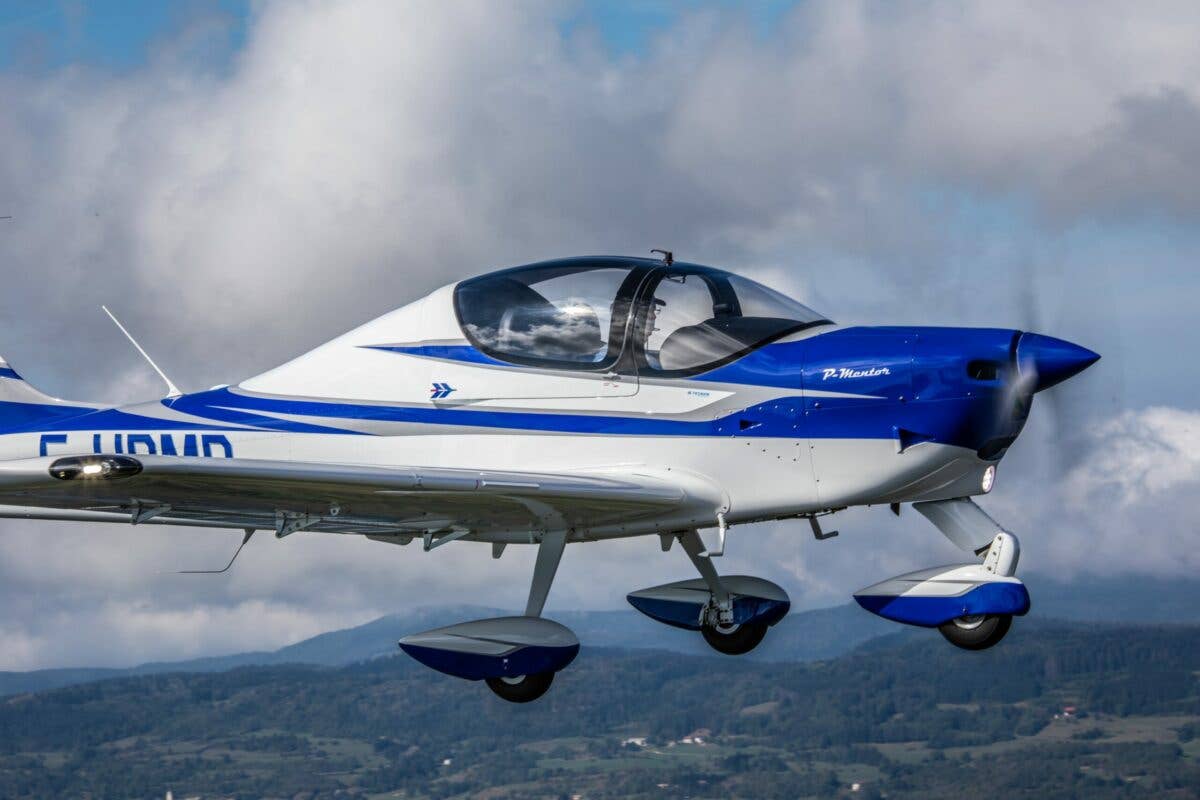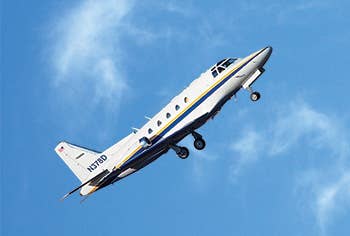
On Feb. 12, 2009, 50 people lost their lives as Colgan Air Flight 3407 crashed while on an instrument approach into Buffalo Niagara International Airport. As is the case with many accidents, several causes contributed to the crash, including icing conditions and fatigue. However, what may have saved the lives of the people on board that airplane and on the ground can be summed up in three simple words: “unload for control.”
According to the accident report, the captain added power but applied back pressure on the control column when the stick shaker in the Bombardier DHC-8-400 he was flying alerted him that the airplane was about to stall. According to Bombardier, once the excessive angle of attack activated the stick pusher, the captain would have had to pull with a force equivalent to 80 pounds to override the command to reduce the angle of attack, yet he kept pulling back.
The Colgan Air pilot is far from alone in losing control of his airplane. In statistics published by Boeing in 2013 that covered fatal accidents for commercial flights from 2003 through 2012 and annual statistics published by the Aircraft Owners and Pilot’s Association in its Joseph T. Nall Report for general aviation accidents, stalls and loss of control in flight are by far the most common causes of airplane accidents, accounting for thousands of fatalities over a 10-year period. Many of these accidents could have been prevented had the pilots received upset prevention and recovery training, also called UPRT.
UPRT is not a new concept. At the request of the FAA, an industry group developed the Airplane Upset Recovery Training Aid in 1998, a document that was last revised in 2008. The FAA also released advisory circular 120-109 in 2012 to place the focus on reducing the angle of attack during stall recoveries.
While not widely known, a company called Flight Research in Mojave, California, has provided UPRT to about 6,000 pilots since the early 1980s, according to William Korner, chairman and CEO, who purchased the business from Sean and Nadia Roberts in 2013. What sets Flight Research apart from other UPRT training programs is that it uses an actual business jet. “We think it is critical that pilots get in airplanes that react and feel like the airplanes they are going to fly, be subject to the same physiological and environmental impact that they are going to feel in an airplane when it gets into an unexpected upset and then be taught how to recover,” Korner says.
I recently had the opportunity to explore the program at Flight Research firsthand. On my way to Mojave, my mind’s eye envisioned the countless unnamed, brave pilots who have graced the skies above that vast desert floor, some on historical missions to break barriers once thought unbreakable, others testing airplanes that nobody outside of this remote desert town would ever hear of. There continues to be a lot of mystery in the air at the Mojave Air and Space Port, with all kinds of unusual aircraft and spacecraft, big and small, lurking behind inconspicuous hangar doors.
It was time to stop daydreaming, but the cast of characters and airplanes I was introduced to at Flight Research seemed worthy of the hallowed aviation geography. Korner, himself a highly decorated combat veteran who flew in Vietnam and during the Gulf War, has flown everything from helicopters to supersonic jets and has founded and run several substantial industry-leading companies. He showed off such rarities as a de Havilland DHC-1 Chipmunk, an NDN Firecracker, a Sikorsky S-55B helicopter, a T-38 Talon and several Saab Draken jets, just to name a few. With its vast fleet of airplanes, Flight Research could tailor its UPRT to any pilot. The program I was offered included flights in an Aermacchi MB-326 Impala and a North American Sabreliner 60.
Flight Research uses Sabreliners to train bizjet pilots how to avoid and recover from unusual attitudes.|
Before jumping into any airplane, however, we had to cover a number of topics in ground school, such as the general flight envelopes of airplanes, flameouts and reignition procedures, and the aerodynamics of stalls, stall indications, and stall prevention and recovery techniques. The training topics were intermixed with famous accident scenarios — such as the Colgan accident and Air France Flight 447, both of which resulted from unrecovered stalls — that could have been prevented with the use of proper techniques.
The flights are designed to make sense of the technical data and strategies presented in the ground school. Flight Research’s chief instructor pilot Rick Searfoss briefed me on the first flight scenario. Searfoss has an impressive background as a military pilot flying F-4s and F-111s and as an astronaut and space shuttle commander. He helped me get comfortable in the Sabreliner, which has a panel and headliner full of gauges and switches. While its panel is complex and outdated compared to that of modern bizjets, the Sabreliner is a terrific platform for upset recovery training since it, according to Korner, behaves much like the bizjets his corporate customers fly. In addition, the Sabreliner’s robust design has a similar swept-wing and tail design to the transonic F-86 Sabre fighter jet.
Searfoss used the call sign “Striker 02” for the Sabreliner and requested a Sage Two clearance to play around VFR as high as 20,000 feet inside the Isabella MOA area just west of the Edwards AFB R-2515 restricted area. It didn’t take long after I applied full throttles for the Pratt & Whitney JT12A engines to bring the airplane to 119 knots, our target for rotation. After a smooth liftoff, I made a turn northbound along California State Route 14, and the desert floor quickly fell away as we climbed out at 200 knots.
You may be surprised to find out that an airplane can stall at any attitude if the critical angle of attack is exceeded, but it cannot stall at 0 G. As a result, Flight Research uses the concept of unloading for control. This could mean simply reducing some of the back pressure on the yoke or, in extreme upsets, pushing forward on the yoke quite aggressively, something bizjet pilots generally try to shy away from to keep the boss in the back happy. Unloading is the key, followed by application of Throttle as required, Ailerons to roll level and Pitch to level flight — with the acronym UTAP for short.
For the first stall, Searfoss asked me to recover with a minimal loss of altitude, as bizjet pilots have traditionally been taught, by adding power without dropping the nose. From the stick shaker, the Sabreliner’s most obvious approach to stall indication comes at around 112 knots, which took us into the red arc on the angle of attack indicator. It took about 10 seconds to get back to a safe speed of 120 knots. However, by unloading for control while adding power, the speed recovery took place in no more than six seconds. While the second scenario caused a greater initial altitude loss, I recovered control of the airplane in nearly half the time.
We then went into a fully developed stall, which in addition to the stick shaker and redlined AOA gave us a slight vibration in the rudder pedals along with mushy controls. To demonstrate that the airplane can recover without the use of power, in case of an engine flameout for example, Searfoss instructed me to recover using pitch only. While the maneuver was quite aggressive and resulted in several hundred feet of altitude loss, I regained control of the airplane quite quickly.
Next, we pulled the power back again and simulated the Colgan scenario by holding the airplane at 106 knots in a deep stall. I had to force the yoke way aft in order to maintain the stalled condition through the shaker, but it was a surprisingly comfortable descent at 1,500 fpm. If the stick shaker and redlined angle of attack were ignored, we appeared to be in a fairly stable scenario, which of course we weren’t. But it was easy to see how the Colgan captain had been fooled.
To practice accelerated stalls, Searfoss pointed out the G-meter in the maze of instruments and instructed me to roll into a 60-degree bank while pulling 2 Gs. Once again, I had to hold a significant amount of back pressure to keep the load on the wing. Searfoss asked me to bank the airplane back and forth to feel the significant mushiness of the controls. Once I unloaded the yoke slightly and applied aileron deflection again, the difference in control response was remarkable.
Another valuable component of the training was what Flight Research refers to as “unload calibration.” Searfoss asked me to pull the controls to 30 degrees pitch up then unload to 0.75 G and hold that load factor. The sensation I experienced is not likely to make any rear passengers feel too uncomfortable. We then repeated the sequence with 0.5 G and 0.25 G. While 0.25 G may have raised the glasses off the tables in the back, bizjet pilots would learn from the unload calibration that they would need to give the yoke quite a significant push to make their passengers uncomfortable, but that action would quickly remove them from a possible stall scenario.
More extreme training maneuvers take place in the Aermacchi MB-326 Impala, a single-engine, advanced trainer jet.|
But an upset that causes an accident is an unexpected condition outside of the normal parameters that requires immediate action from a startled and confused flight crew. To practice recovering from these types of scenarios, Searfoss took the controls and instructed me to close my eyes.
After putting the airplane in as much as 50 degrees pitch up, 30 degrees pitch down and 70 degrees of bank, Searfoss asked me to open my eyes and recover. The toughest recovery was a nose-low, 70-degree bank upset. The speed increased rather rapidly, and I ended up pulling nearly 3 Gs, Flight Research’s self-imposed limit for the Sabreliner. The exercise showed the importance of a quick, authoritative control response to an airplane upset rather than the smooth control inputs bizjet drivers are trained to apply.
While the focus of the course at Flight Research is to conduct the training in a platform similar to the jet environment in which its clients fly, there are some extreme scenarios that cannot be practiced in the Sabreliner. This is where the Impala comes into play. I was outfitted with a flight suit, helmet, oxygen mask and boots to wear in the Impala and went through a thorough briefing on its Martin-Baker ejection seat. As I got strapped into a seat in the classroom, the text from a fortune cookie that I opened a few days before came to mind. “A bold and dashing adventure is in your future.” It appeared quite appropriate since I was soon to get topsy-turvy in the sky.
The next morning, Scott Glaser briefed our Impala flight. Glaser is a civilian pilot and flight-test engineer who is finishing up a doctorate in biomedical engineering. Glaser was exposed to radial engine and jet-powered warbirds at a young age and has a lot of aerobatic experience in these types of airplanes.
A support team helped us get the Impala ready, and I pushed the single throttle to the firewall, waited for the engine to spool up and released the brakes. The Impala’s skin fit me like a glove, and I felt comfortable maneuvering it right from takeoff.
We started out with some straight and accelerated stalls, which announced themselves by shaking the airplane. One surprisingly smooth recovery procedure we practiced for the accelerated stall was simply allowing the bank angle to slice through the horizon.
We then moved on to more extreme attitudes. For instructional purposes, Glaser asked me to roll the airplane inverted and pull for a split S maneuver. It was a rough recovery in which I felt a stall buffet while the nose pointed straight toward the desert floor — an excellent demonstration of what not to do.
A much more comfortable way to recover from inverted flight is to unload the controls and roll to a level attitude. We then completed a series of extreme upset scenarios — anywhere from 90 degrees to inverted, with and without as much as 64 degrees of flaps. By far the most comfortable recovery, I found, was to continue the roll all the way around to level flight, knowledge that could come in handy in case of a dreaded wind-shear or wake-turbulence upset.
The grand finale — a three-turn spin — was surprisingly comfortable and easy to recover from, though I managed a momentary secondary stall during the recovery.
There is no formula that can be taught for each and every upset scenario since the combinations are endless. How much to unload and for how long and how much throttle to apply are very dependent on the flight conditions. But there is no question that I walked away from Flight Research with improved flying skills and a few new tools in my pocket in case I ever find myself in a sudden upset attitude.
I didn't want to leave the Impala, but I preferred stepping through its canopy over exiting with the ejection seat.|
The full training course at Flight Research includes three days of ground and flight training in the Sabreliner 60 and Impala for a cost of $17,500. A two-day refresher course is also available for $12,500. Korner says some insurance companies are starting to recognize the importance of UPRT and are offering incentives to encourage corporate flight departments and bizjet operators to put their pilots through this type of training on a regular basis.
“We believe we’ll have a safer pilot community when people start incorporating upset training into their annual training requirements,” Korner says.
In this video, Flying Senior Editor Pia Bergqvist learns to recover from upset attitudes in the Sabreliner 60.
In the following video, Pia learns to recover from extreme upsets in the Impala.
We welcome your comments on flyingmag.com. In order to maintain a respectful environment, we ask that all comments be on-topic, respectful and spam-free. All comments made here are public and may be republished by Flying.

Subscribe to Our Newsletter
Get the latest FLYING stories delivered directly to your inbox

